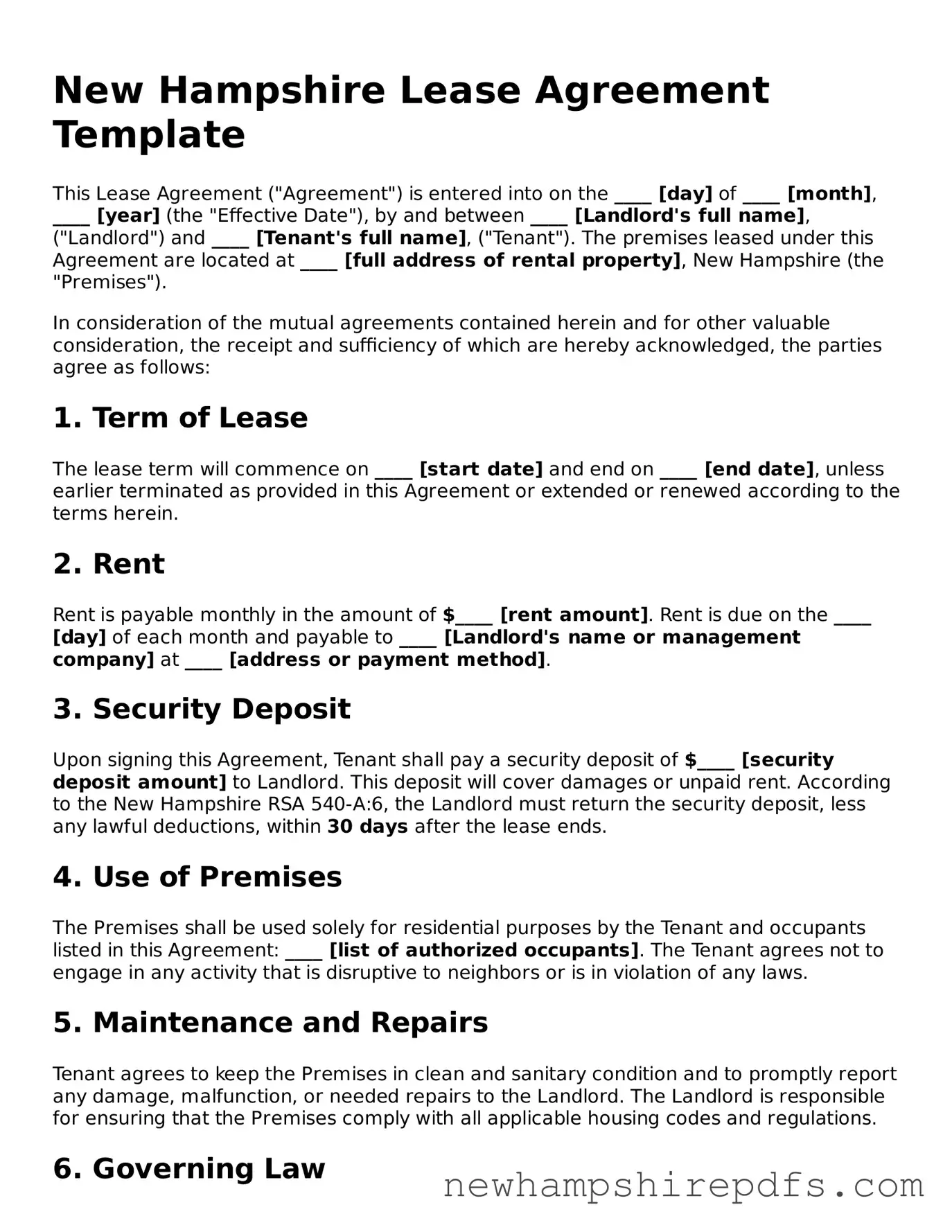New Hampshire Lease Agreement Template
This Lease Agreement ("Agreement") is entered into on the ____ [day] of ____ [month], ____ [year] (the "Effective Date"), by and between ____ [Landlord's full name], ("Landlord") and ____ [Tenant's full name], ("Tenant"). The premises leased under this Agreement are located at ____ [full address of rental property], New Hampshire (the "Premises").
In consideration of the mutual agreements contained herein and for other valuable consideration, the receipt and sufficiency of which are hereby acknowledged, the parties agree as follows:
1. Term of Lease
The lease term will commence on ____ [start date] and end on ____ [end date], unless earlier terminated as provided in this Agreement or extended or renewed according to the terms herein.
2. Rent
Rent is payable monthly in the amount of $____ [rent amount]. Rent is due on the ____ [day] of each month and payable to ____ [Landlord's name or management company] at ____ [address or payment method].
3. Security Deposit
Upon signing this Agreement, Tenant shall pay a security deposit of $____ [security deposit amount] to Landlord. This deposit will cover damages or unpaid rent. According to the New Hampshire RSA 540-A:6, the Landlord must return the security deposit, less any lawful deductions, within 30 days after the lease ends.
4. Use of Premises
The Premises shall be used solely for residential purposes by the Tenant and occupants listed in this Agreement: ____ [list of authorized occupants]. The Tenant agrees not to engage in any activity that is disruptive to neighbors or is in violation of any laws.
5. Maintenance and Repairs
Tenant agrees to keep the Premises in clean and sanitary condition and to promptly report any damage, malfunction, or needed repairs to the Landlord. The Landlord is responsible for ensuring that the Premises comply with all applicable housing codes and regulations.
6. Governing Law
This Agreement shall be governed by and construed in accordance with the laws of the State of New Hampshire, without giving effect to any principles of conflicts of law.
7. Entire Agreement
This Agreement constitutes the entire agreement between the parties relating to the subject matter hereof and supersedes all prior or contemporaneous oral or written agreements concerning such subject matter. The parties confirm that no promises, representations, or undertakings have been made except as expressly set forth in this Agreement.
Signatures
IN WITNESS WHEREOF, the parties have executed this Lease Agreement as of the Effective Date first above written.
Landlord's Signature: _______________________________ Date: ____________
Tenant's Signature: _________________________________ Date: ____________
Witness's Signature: _______________________________ Date: ____________
Emergency Contact Information
Please provide an emergency contact:
- Name: ____ [emergency contact name]
- Relationship: ____ [relationship]
- Phone Number: ____ [phone number]
- Email Address: ____ [email address]
